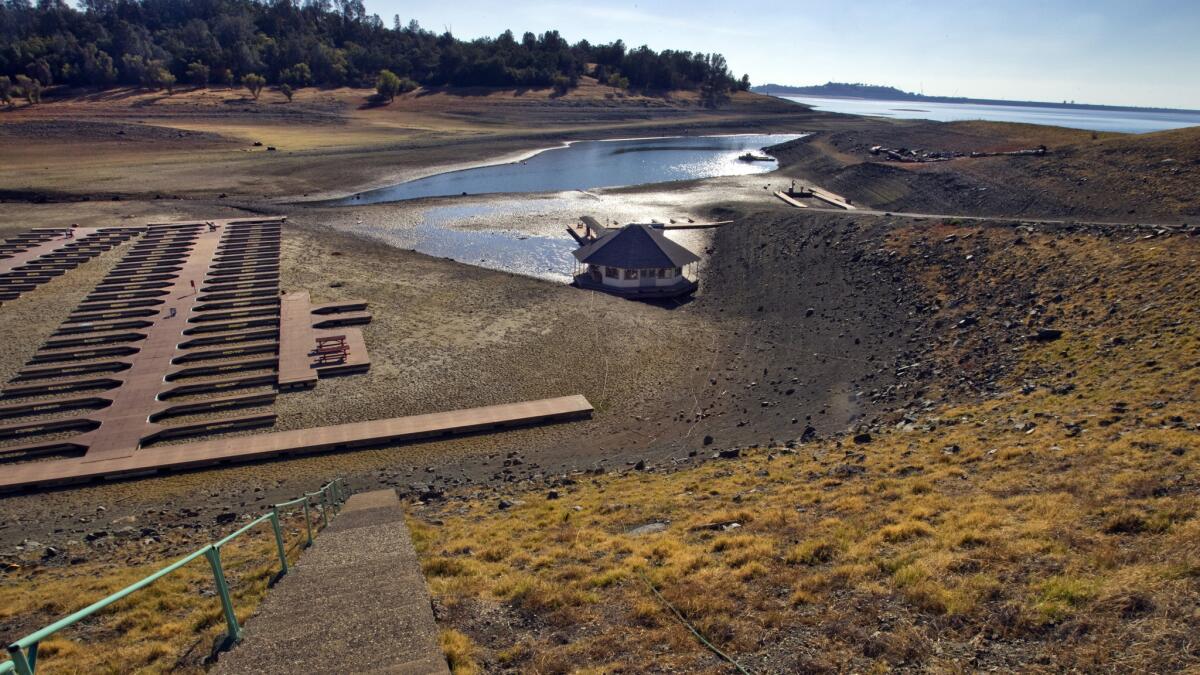Is drought the new normal for Southern California?

Increased carbon dioxide in the atmosphere is altering Earth’s most important atmospheric weather cell, drawing more moisture into the deep tropics and broadening areas of drought at higher latitudes, according to a new study.
The U.S. west, including Southern California, as well as swaths of subtropical Brazil that are suffering from acute drought lie in the heart of the decreased rainfall band shown in 33 climate scenarios run over a 140-year span, according to the study published online Monday in the journal Proceedings of the National Academy of Sciences.
The study shows a clear global-warming signal in the changed water cycle brought on by a “deep tropical squeeze” in the Hadley circulation, a massive convection-driven cell extending from Earth’s equator toward the planet’s mid-latitudes.
“We are finding the region of drying exactly coincides with the places where we are now seeing this worldwide drought and wildfire happening,” said University of Maryland atmospheric scientist William Lau, lead author of the study. “That includes the western U.S., southwestern U.S., Mexico, Brazil, southwestern Australia, southern Africa, northern Africa, the mid-Mediterranean region, southern Europe — all this is at the edge of the climatological sub-tropics that are being extended.”
The change is analogous to narrowing the jet of a fountain, causing it to spray at greater velocity, rise higher and spread out farther, Lau said.
In climate terms, that means warm air is rising faster and higher in a more narrow band of roughly 20 degrees of latitude centered on the equator. That air then descends from the upper troposphere on a much broader area in mid-latitudes — precisely where much of Earth’s population resides, the study found.
A very narrow swath of air over the deep tropics, mostly above oceans, will increase in humidity even as heavily populated land areas at the fringes of the subtropics dry out, a scenario Lau compared to the rich getting richer and the poor getting poorer.
Climate experts have been hard-pressed to determine whether individual droughts are driven by climate change, both because reliable atmospheric data from modern instruments don’t go back far enough, and because natural variability produces cycles that can be many decades long.
“The hard part is you cannot look at a specific drought and say, this is global warming; You have to look at all this collection of droughts, both globally and in time,” Lau said “Then you get a sense that there is that creeping trend that is producing drought in that region. And that’s what we’re finding.”
The study averaged monthly data from 33 different climate models over 140 years, allowing researchers to discern the signal from global climate change from the noise of internal variability. That signal coincided with measured data, allowing them to correlate existing droughts with the patterns expected in the models.
One area where the new analysis falters, however, is in Asia’s monsoon region, where heat-reflecting aerosol pollution could affect on regional climate, Lau said.
Other studies have chronicled a poleward expansion of Earth’s large-scale atmospheric circulation systems, including the Hadley cycle.
The Hadley cell was named for George Hadley, an 18th century meteorologist who first proposed the mechanism as an explanation of trade winds that have been familiar to sailors for centuries. It is one of three inter-connected cells that drive all of Earth’s weather, determining such phenomena as desert bands and the fluctuating position of jet streams.
Follow me on Twitter: @LATsciguy







